Sony Xperia XZ2 review
The Sony Xperia XZ2 is the Japanese firm's most recent flagship handset, but it refuses to follow in the footsteps of many of this year's top-tier smartphones.
Sure, it has the high-end power under the hood, and a well-specced camera with a slow-mo party piece, but in comparison to its peers it has a resolution commonly found on phones half its price, and it isn't afraid of showing us some bezel.
The Xperia XZ2 is slightly confusing then. Is this a true flagship phone that's ready to take on the likes of the iPhone X, Samsung Galaxy S9 and Huawei P20, or is it, rather, going up against young upstarts such as Honor and OnePlus?
After extensive time spent reviewing the Xperia XZ2, we're still not sure.

Sony Xperia XZ2 price and availability
The Sony Xperia XZ2 is available in most major markets worldwide, so it shouldn't be too hard to find.
In terms of the Sony Xperia XZ2 price, you're looking at $800, (£699, around $AU1,000) SIM-free.
That makes it slightly cheaper than the Samsung Galaxy S9 in the UK, but almost $100 more expensive than the S9 in the US. It's comfortably cheaper than the iPhone X, and sits in between the Huawei P20 and P20 Pro, while it’s more expensive than the LG V30 and Google Pixel 2 XL.
To sweeten the deal in the UK, you can bag yourself a free PS4 (or a PSVR if you already have the console) if you order early.
Key features
4K HDR video recording and HDR display
The Sony Xperia XZ2 is the world's first smartphone that's capable of recording 4K HDR footage, allowing you to capture more impressive-looking videos.
It's great news for budding videographers, providing an easy way of capturing high-quality footage which looks great on 4K HDR TVs and monitors.
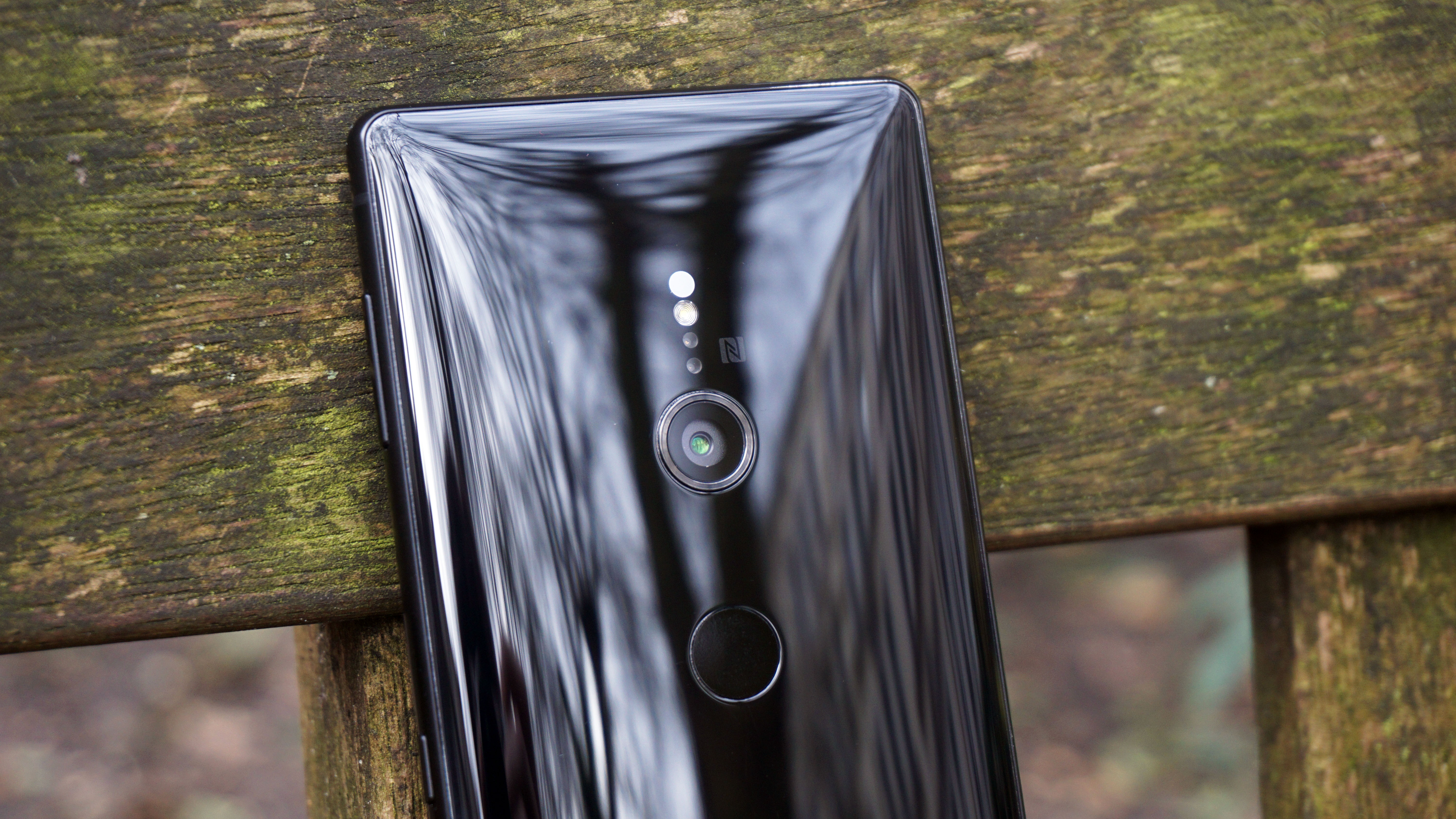
However, for many the more likely use of the video camera on the Xperia XZ2 will be to feed their social media addiction, in which case the quality offered on the phone is moot.
That said, the HDR playback quality can be enjoyed on the Xperia XZ2's HDR-enabled screen. This isn't the first time Sony has built HDR technology into a smartphone display, but the technology works well here to deliver a crisp, bright and visually enticing viewing experience.
Dynamic Vibration System
The Xperia XZ2 also features something new called Dynamic Vibration System, which aims to give you an enhanced haptic feedback experience when watching video, playing games or listening to music.
It's fine for gaming, but when it comes to movies it feels entirely like a gimmick. We get how it's an enhancement on a PS4 controller to have this DualShock-type functionality, but when watching a movie on a phone it just irks.
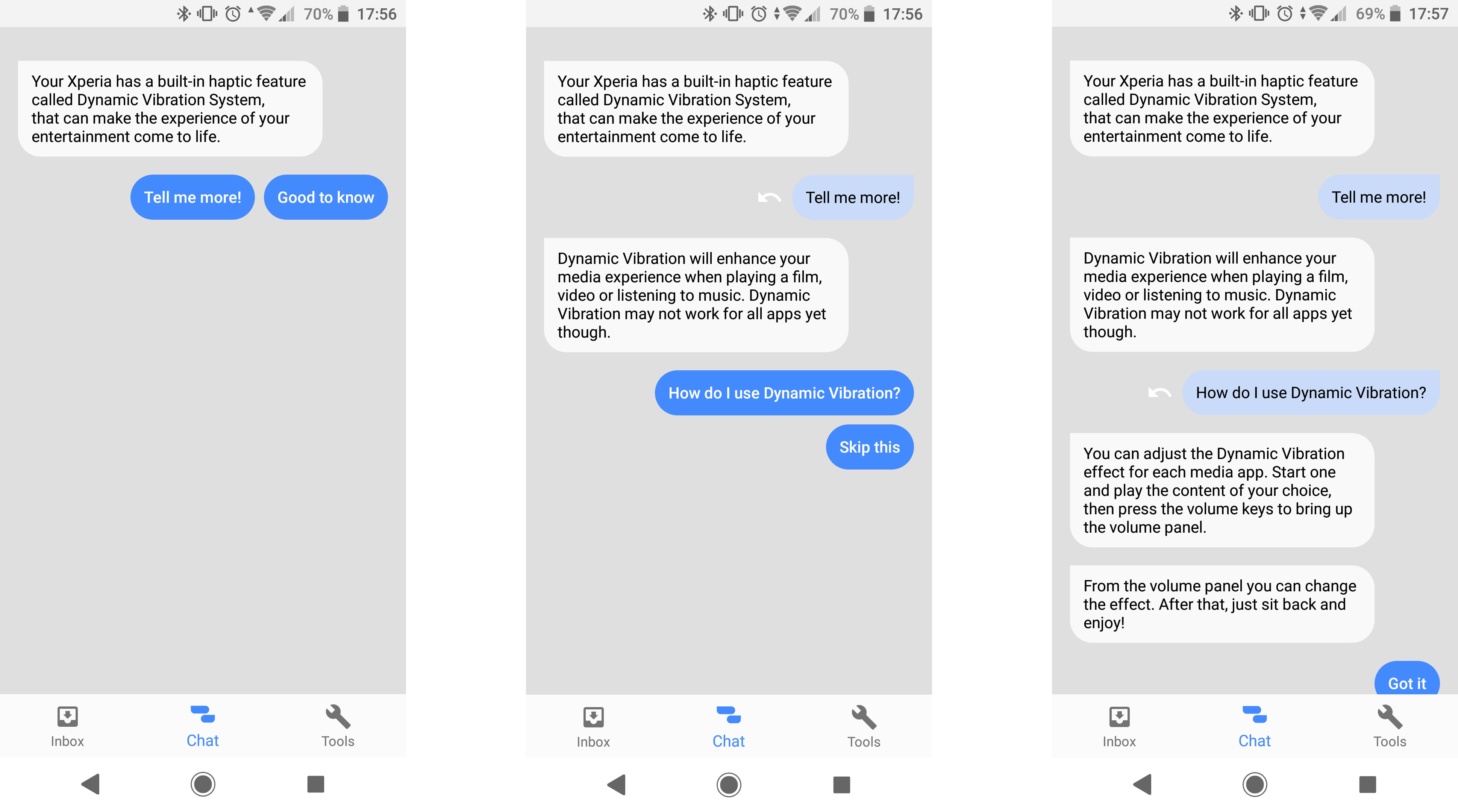
Watching episodes of Scrubs on Amazon Prime Video, the Dynamic Vibration System only features when there are off-screen sound effects. At no other times are there vibrations, even if there's a collision on screen – a situation where we'd expect to feel something from the Xperia XZ2.
We found it similarly bizarre for music playback, with the phone buzzing along in our hand to the beat. It's certainly different, but we wouldn't say it necessarily enhances the playback experience.
Lock the handset during playback, though, and it'll stop vibrating, which means it won't be constantly making irritating sounds if you pop the Xperia XZ2 on your desk.
You can adjust the vibration level of the system, with 'mild', 'normal' and 'powerful' options to choose from.
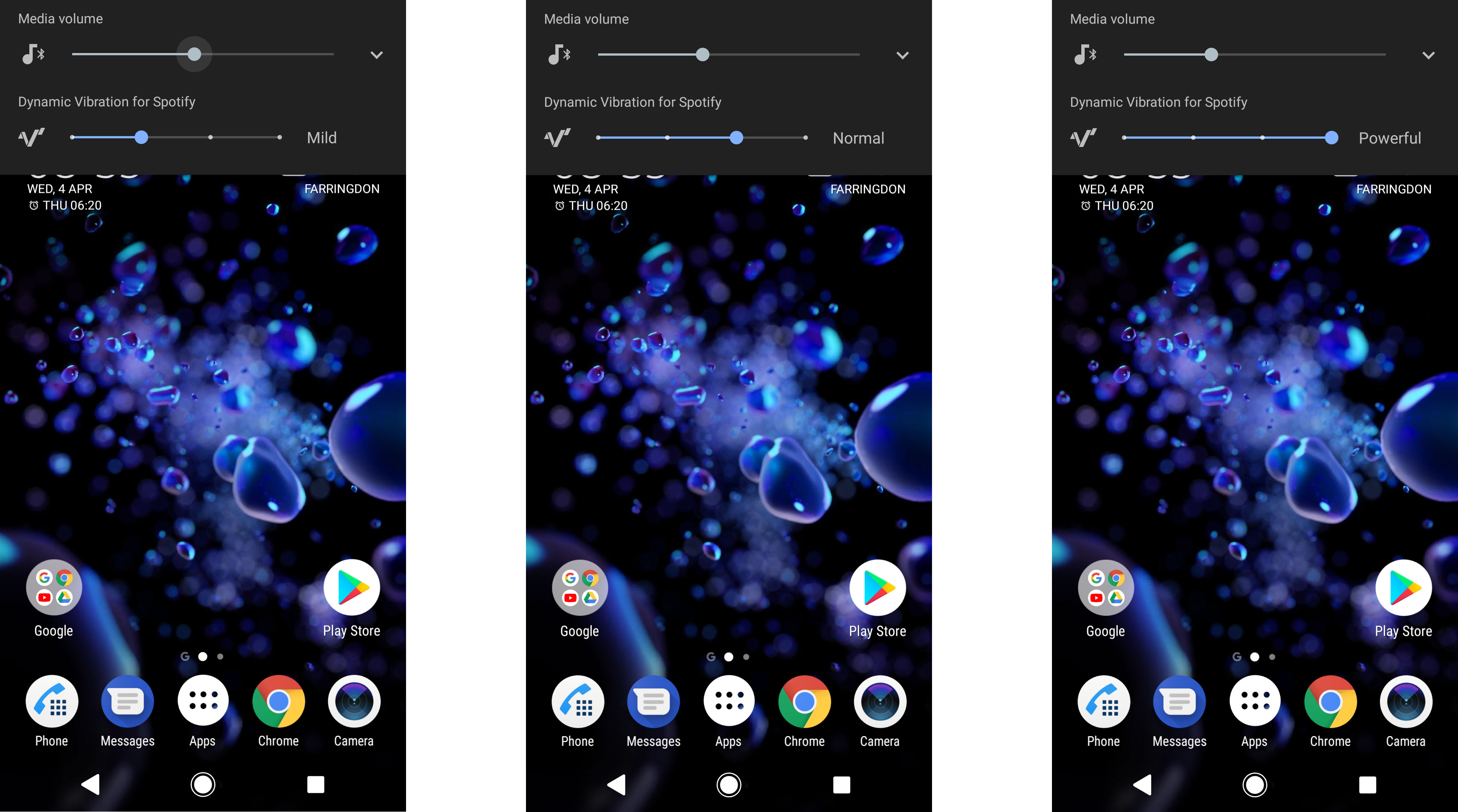
You adjust these as you would the volume: just click the volume rocker during playback or gameplay and you'll notice an additional segment in the notification bar giving you control. You can also opt to turn the feature off completely, which we did after a while.
The Dynamic Vibration System is a fun addition best suited to gaming, but it's a feature we could live without – and the additional battery drain, although minimal, isn't worth the limited experience it provides.
Full HD slow-motion video
Sony first unveiled its 960fps slow-motion video skills in 2017 on the Sony Xperia XZ Premium, and now it has competition from the Samsung Galaxy S9 and S9 Plus.
To ensure it stays one step ahead of the slow-mo competition, Sony has upped the recording quality to 1080p (Full HD), while Samsung offers just 720p at the same super-slow 960fps.
It means better slow -motion shots all round, although the Xperia XZ2 – like its predecessors – still favors natural daylight for the best results.
Design
- Premium design, but it's still large, heavy and offers little grip
- Poorly placed fingerprint scanner and no headphone jack
The Sony Xperia XZ2 has been given a relatively major design overhaul compared to the previous few generations.
The rear and sides of the handset are now more curved, allowing it to sit in the palm more nicely, with the camera, flash and sensors moved into a central, vertical column on the back.
It looks and feels premium, with the metal frame running around the circumference of the device providing a classy-looking and strong framework.
The sizable bezels that we've chastised Sony for over the years have also been reduced on the front of the handset, giving a cleaner, more modern look to the device.
Measuring 153 x 72 x 11.1mm, the Xperia XZ2 is still bigger than the Galaxy S9 and iPhone X – both of which have 5.8-inch displays versus the 5.7-inch offering here – and it's also heavier at 198g.
Sony Xperia XZ2 hands on gallery
The additional thickness does make it feel a little like a flagship phone from a few years ago, too – while it's great to see Sony pushing new design boundaries, the Xperia XZ2 still doesn’t boast the refinement of its key rivals.
Oh, and another thing, this phone offers zero grip.
Even when we plugged it in at night and popped it on our bedside table, the ever-so-slightly taught charging cable generated enough force to drag the phone along the surface and ultimately onto the floor – less than ideal as you're about to drop off to sleep.
The fingerprint scanner has been relocated to the vertical stack on the rear after spending several generations on the side of Sony's flagship handsets. There's good news for those in the US too, as Sony has finally seen fit to include the biometric feature on its North American handsets after years of inexplicably omitting it for that market.
While the move to the back may be a welcome one for some users, Sony has made quite a major mistake when it comes to the placement of the scanner – it's far too low down on the rear of the phone.
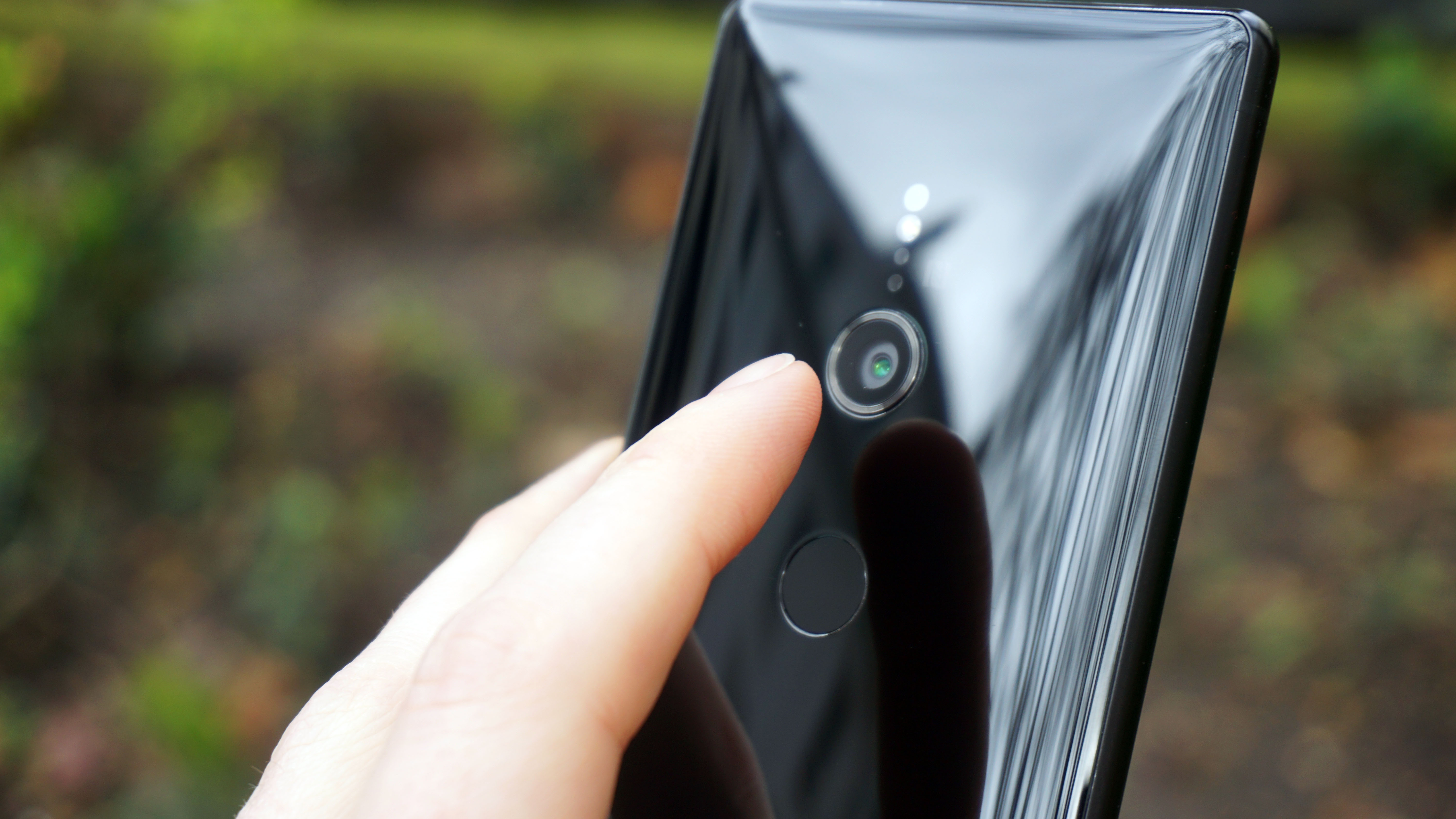
You'll find when you come to use the scanner that your forefinger lands naturally on the camera above it instead.
We lost count of the number of times we tapped the camera thinking it was the digit reader; even when we made a conscious effort to bend our finger to hit the scanner, we'd still hit the camera on occasion.
The two feel very similar to the touch, so it's not easy to realize that you're tapping in the wrong place.
As the days passed we did get better at landing on the fingerprint scanner, but we were still smudging the camera on multiple occasions after more than a week of using the phone.
The power/lock key is conveniently located on the right of the Xperia XZ2, with the volume rocker above it and a dedicated camera key below.
The SIM tray can be found on the top of the phone, while there’s a USB-C port on the bottom. What's missing? Yep, you've guessed it: a headphone jack.
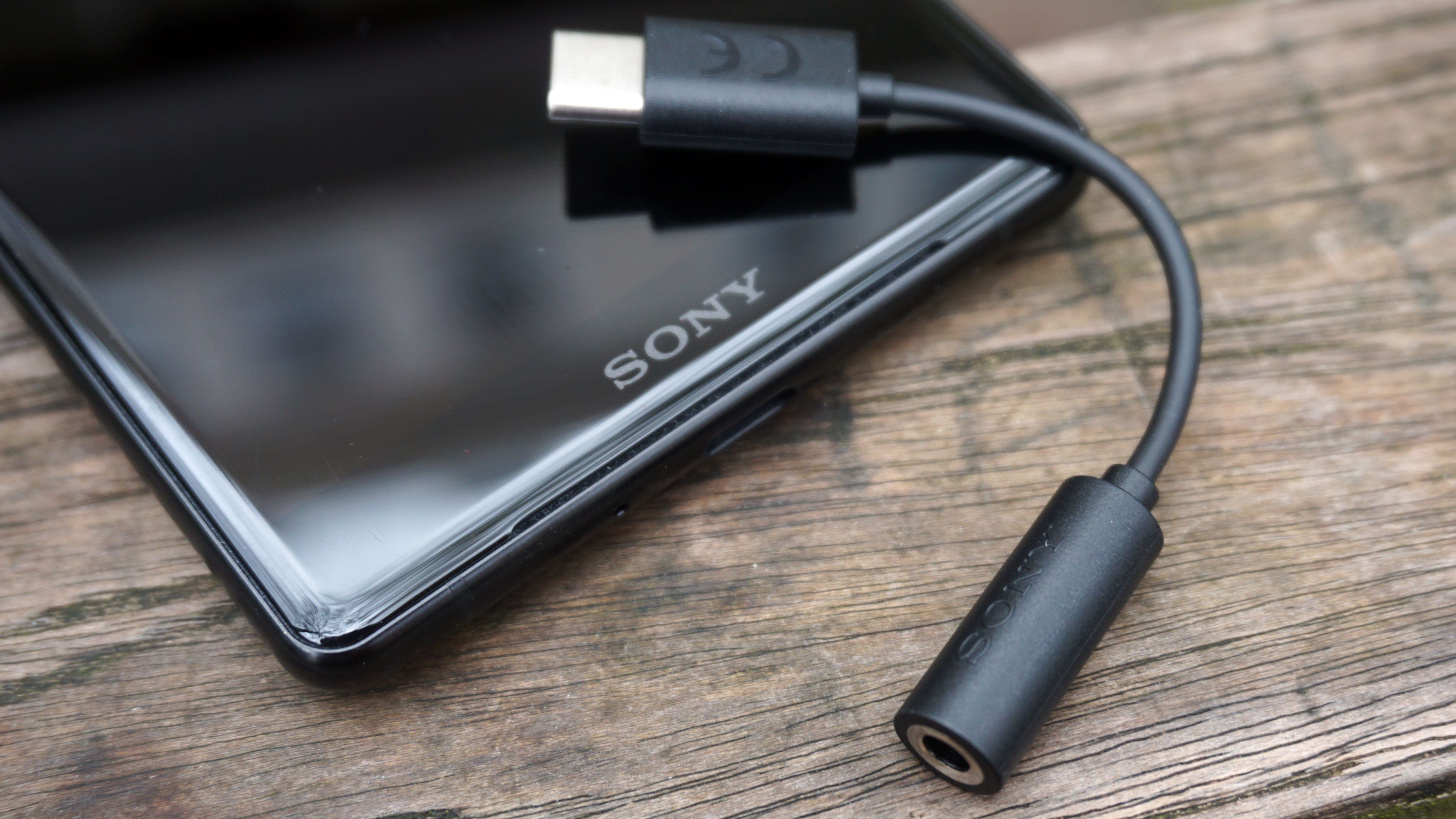
Sony has decided that now is the time to ditch the port, opting instead to provide an adaptor in the box to allow you to plug in your wired headphones via the USB-C port.
It's not a surprise that Sony has done this, as more and more manufacturers are following the trend, but it is disappointing considering the emphasis it usually puts on the gaming, video and music prowess of its smartphones.
The Xperia XZ2 does come with an IP65/68 rating, ensuring that it’s both dust-proof and water-resistant, which means it’ll survive being caught in the rain or an accidental drop into the bath.
Display
- 5.7-inch HDR display
- 'Only' Full HD resolution
The 5.7-inch Full HD display on the Sony Xperia XZ2 feels a little out of place on a top-end handset, where QHD resolutions are the norm.
It does, however, feature the now-popular 18:9 aspect ratio, giving you a wider display in landscape orientation which is better suited to movie playback, as well as more vertical space for scrolling apps.
This means the height of the handset has grown compared to the Xperia XZ1 and its 5.2-inch, 16:9 display, although Sony has reduced the size of the bezels to stop it getting too gargantuan.
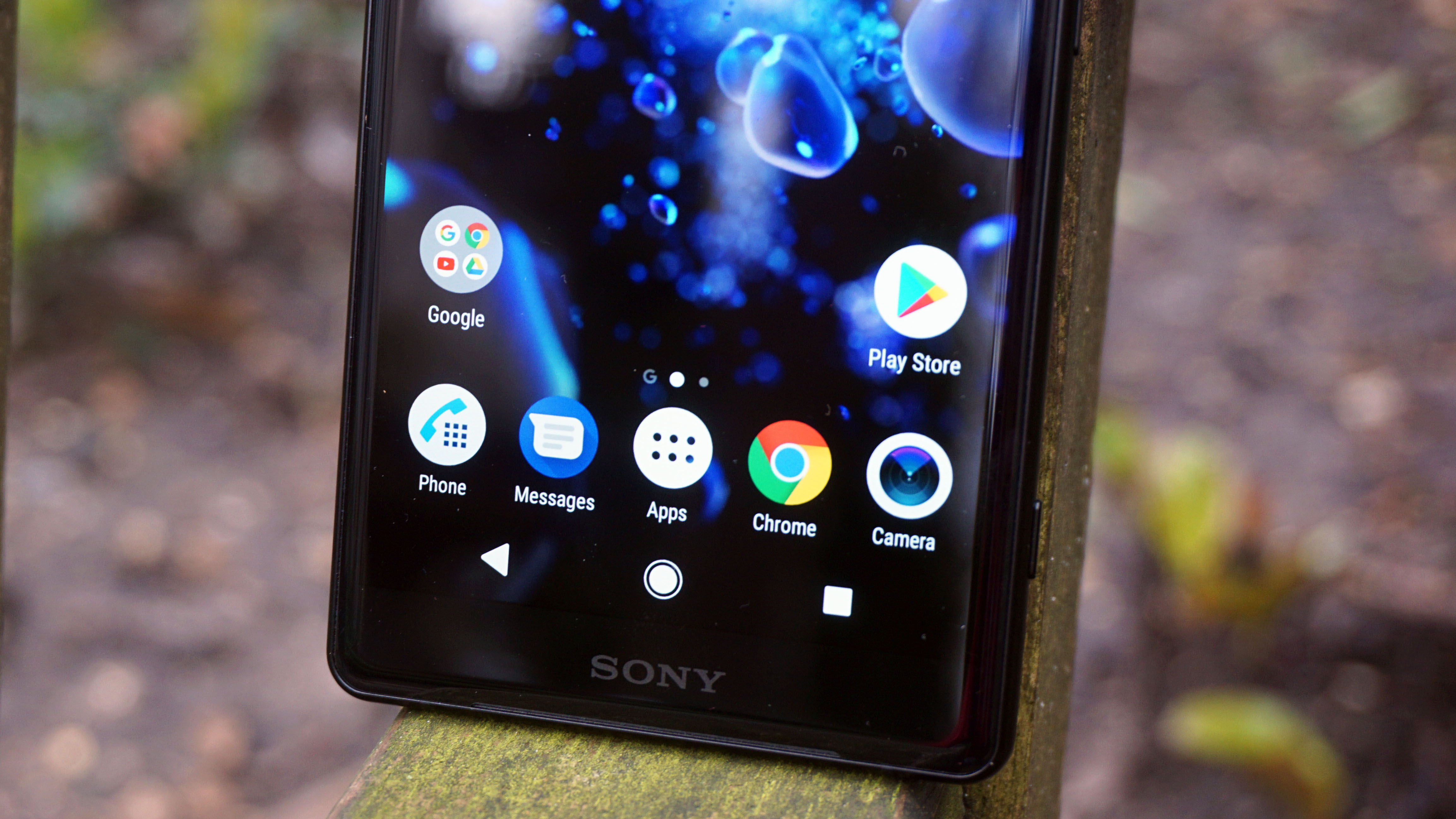
That said, Sony has always been a bezel-loving brand, and somehow it’s managed to stick with a fair amount of bezel above and below the screen. It doesn’t look as attractive as the iPhone X or Galaxy S9 – it's not terrible, but it's not the flowing, glossy screen/chassis meld we could have had.
Sony’s screen technology is often underrated, losing out in the popularity stakes to the eye-popping imagery delivered by the Samsung Galaxy range or iPhone X. But Sony's efforts are far from second-rate.
The debate over whether 2K / QHD screens are worth the extra power required to drive them rages on, but there is a definite difference in clarity, and we’re a little disappointed that Sony has continued to stick with a Full HD resolution.
Given that Sony is striving to make its flagship phones the very best, it’s an odd choice to not plump for that spec here.
What the screen does do is upscale from standard-definition content to HDR (High Dynamic Range), which is the new buzzword on mobile phones. What this means is that you get an improved color range and ‘blacker blacks’ for a more realistic visual experience.
This support also unlocks HDR content on services such as Netflix, Amazon Prime Video and YouTube, and these videos look fantastic on the Xperia XZ2.
Generally the screen is very good – it’s bright and clear – but slide it alongside QHD rivals with AMOLED panels and there’s an obvious different in quality, with the XZ2 not faring as well.
However, in isolation it still looks great for day-to-day tasks – it’s really just intense gaming and high-quality video where it doesn’t quite hit the very top flagship marks.
Battery life
- Lasts a day on a single charge, but not much more
- Wireless charging enabled for easy top-ups (if you have a pad)
The 3,180mAh battery inside the Sony Xperia XZ2 will last you a whole day on a single charge with a moderate-to-high amount of use.
Taking the handset off charge at around 7am each morning, we generally found that it had gone into Stamina mode (which it does when the battery drops below 15%) by the time we got into bed at around 11pm.
Our day usually consisted of a couple of hours of Prime Video, a couple more hours of Spotify streaming, an hour or so of gaming, a few snaps from the camera and a healthy dose of social media, emails and phone calls.
One day we used the XZ2 as a sat nav, and did a two-hour round-trip with the phone, with some gaming, messaging and social media activity in between, and it still managed to make it to bedtime.
There was never enough left in the tank to give us a second day of usage, or even half a day, but we felt confident about taking the Xperia XZ2 out for the day, and even late into the night, in the knowledge that it wouldn’t require a top-up.
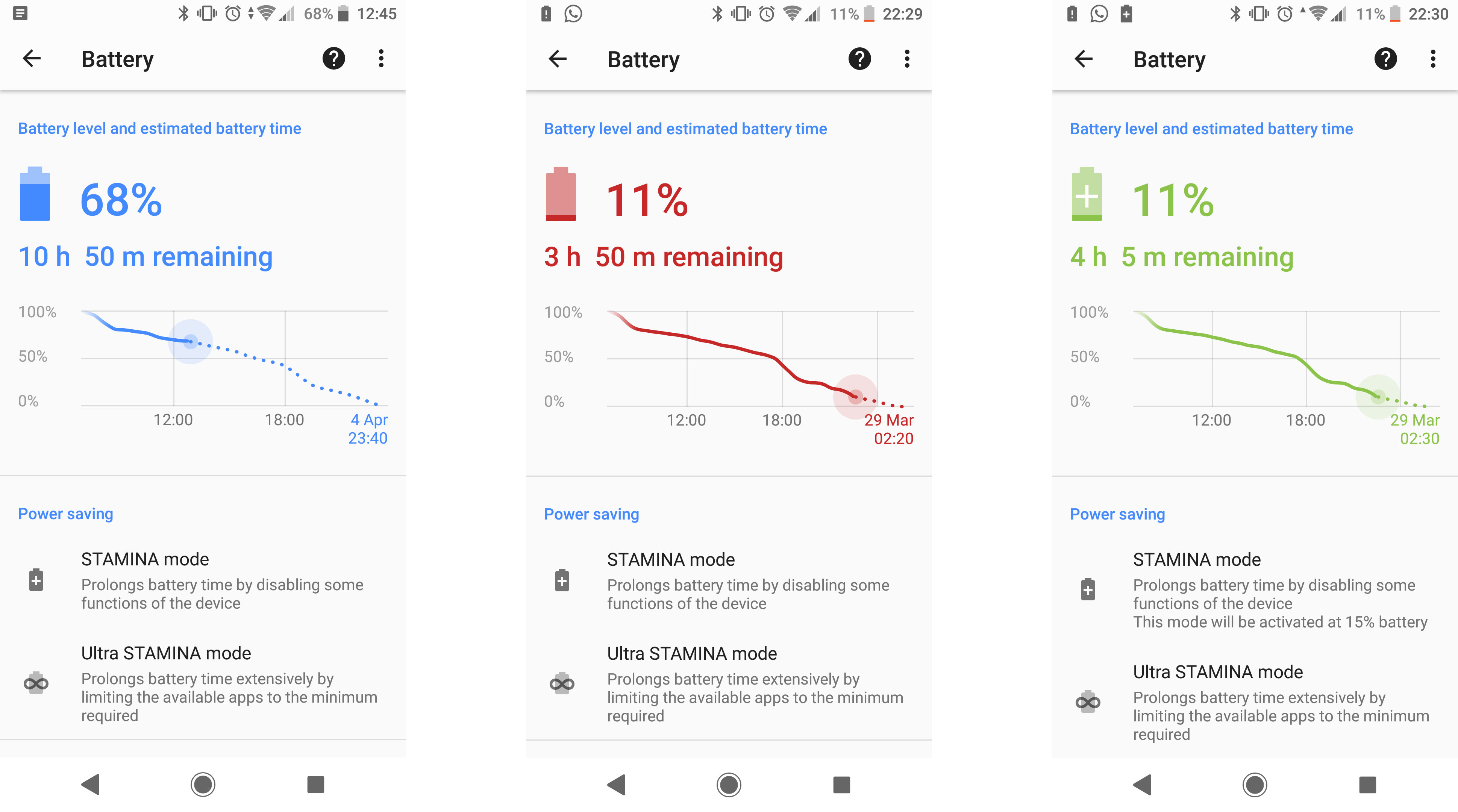
We ran our 90-minute HD video test on the XZ2, with screen brightness at max and accounts syncing over Wi-Fi in the background. The result wasn’t great, with the phone losing 27% of its battery during the playback.
That’s significantly worse than the likes of the Samsung Galaxy S9 (lost 17%) and iPhone X (10%), but you shouldn’t worry too much, as in normal day-to-day usage (with the screen set to auto brightness) we were getting a day of use from the phone.
If you’re going to really push this phone, with graphically intensive gameplay, a lot of 4K HDR video recording or HDR movie playback, then the battery will drain quicker, so make sure you keep a charger close by.
The USB-C port on the base of the handset allows for charging via a cable, but that’s not your only option here. The Sony Xperia XZ2 also supports wireless charging, although you’ll have to purchase a charging pad separately.
It does make charging the phone easier – but only if you line the handset up just right on your pad. The charging area on the XZ2 is located just below center on the rear of the device, which means if you sit the phone centrally on a charging pad it won’t pick up.
Instead you’ll need to carefully position it so that it’s sitting in the correct place – and it’s not always easy to get right first time. You’ll also want to invest in a few pads to make full use of the feature.

Sony offers a couple of power-saving modes on the Xperia XZ2 to help the battery last longer. There’s the standard Stamina Mode, which switches on automatically when you drop below 15%, although you can set it to kick in earlier if you want. This reduces background app activity, wireless connections and screen brightness to help preserve charge.
Depending on when you switch it on, this may give you an extra couple of hours or so, but for times when the going gets really tough you can turn to Ultra Stamina Mode.
When enabled, this mode strips down the interface to just basic apps: calls, messaging, web browser and the like, and defaults to a black and white color scheme. This can greatly extend the life of the handset, although of course you’ll only be able to do very little with it.
Camera
- Solid daylight snapper, but not as good as rivals in low light
- 4K HDR recording is nice, but niche
The Sony Xperia XZ2 features a new 19MP Motion Eye camera, focused on top-notch photography and 4K video recording – and it’s got its work cut out, with the iPhone X, Samsung Galaxy S9 and Huawei P20 Pro significantly raising the smartphone photography bar in recent months.
Sony has once again employed smarts from its photography division, with the Xperia XZ2 boasting a Sony G Lens , Exmor RS sensor for mobile and Bionz mobile image processor.
It also inherits features such as predictive capture and autofocus burst from the XZ1 range, improving low-light shots, keeping moving targets in focus and making sure you don’t miss a smile.
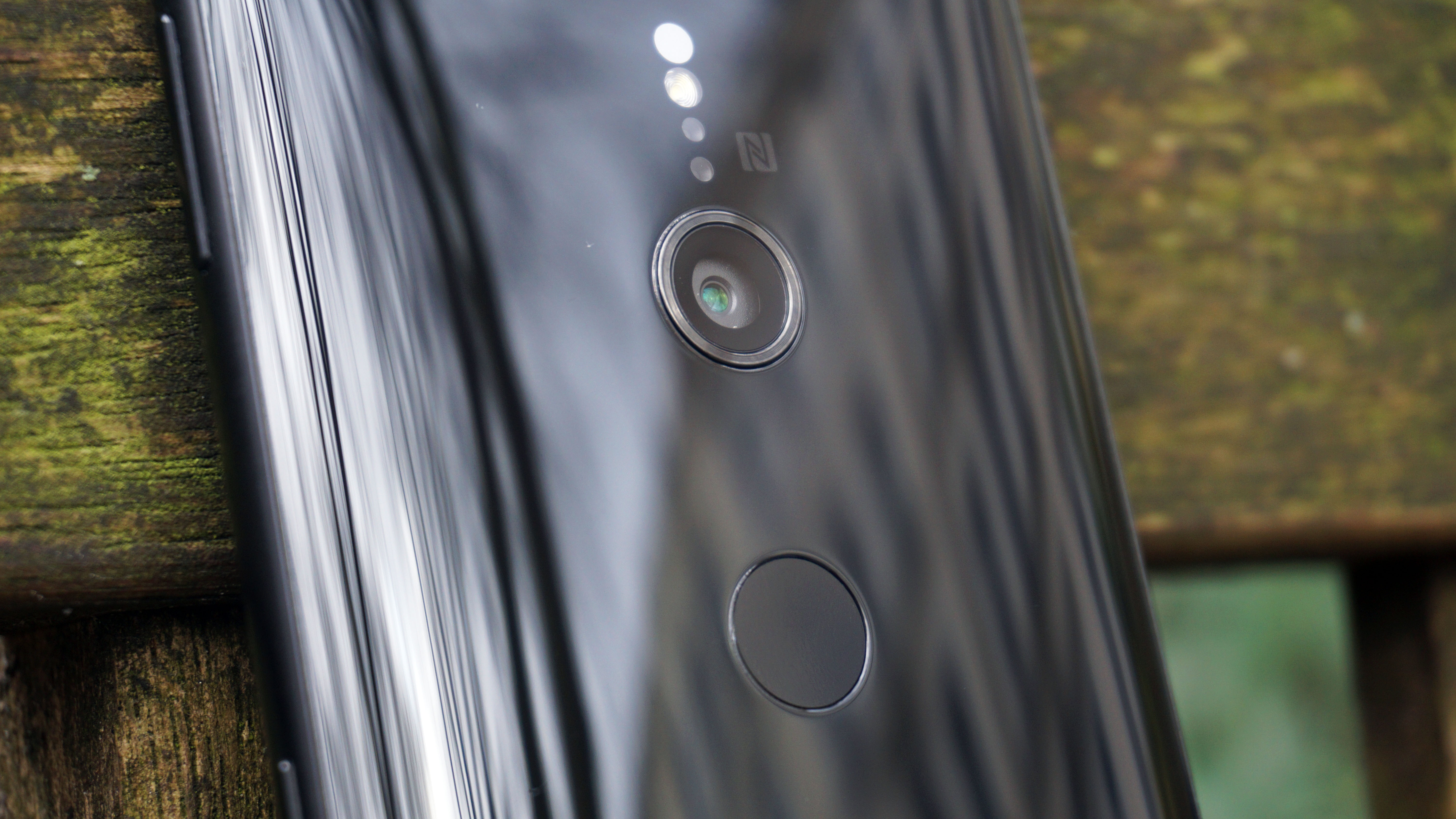
The Sony Xperia XZ2 has some serious camera credentials then, and it also adds 4K HDR video and Full HD super-slow-motion (960fps) recording to its arsenal.
The 4K video recording option is now found in a more logical place in the camera app – slide across to video mode and then hit the settings icon to change the resolution (the default is Full HD).
Previously, you had to slide across to the ‘camera apps’ section to get to 4K video recording, which was rather counter-intuitive, so it’s good to see Sony learning from its mistakes here.
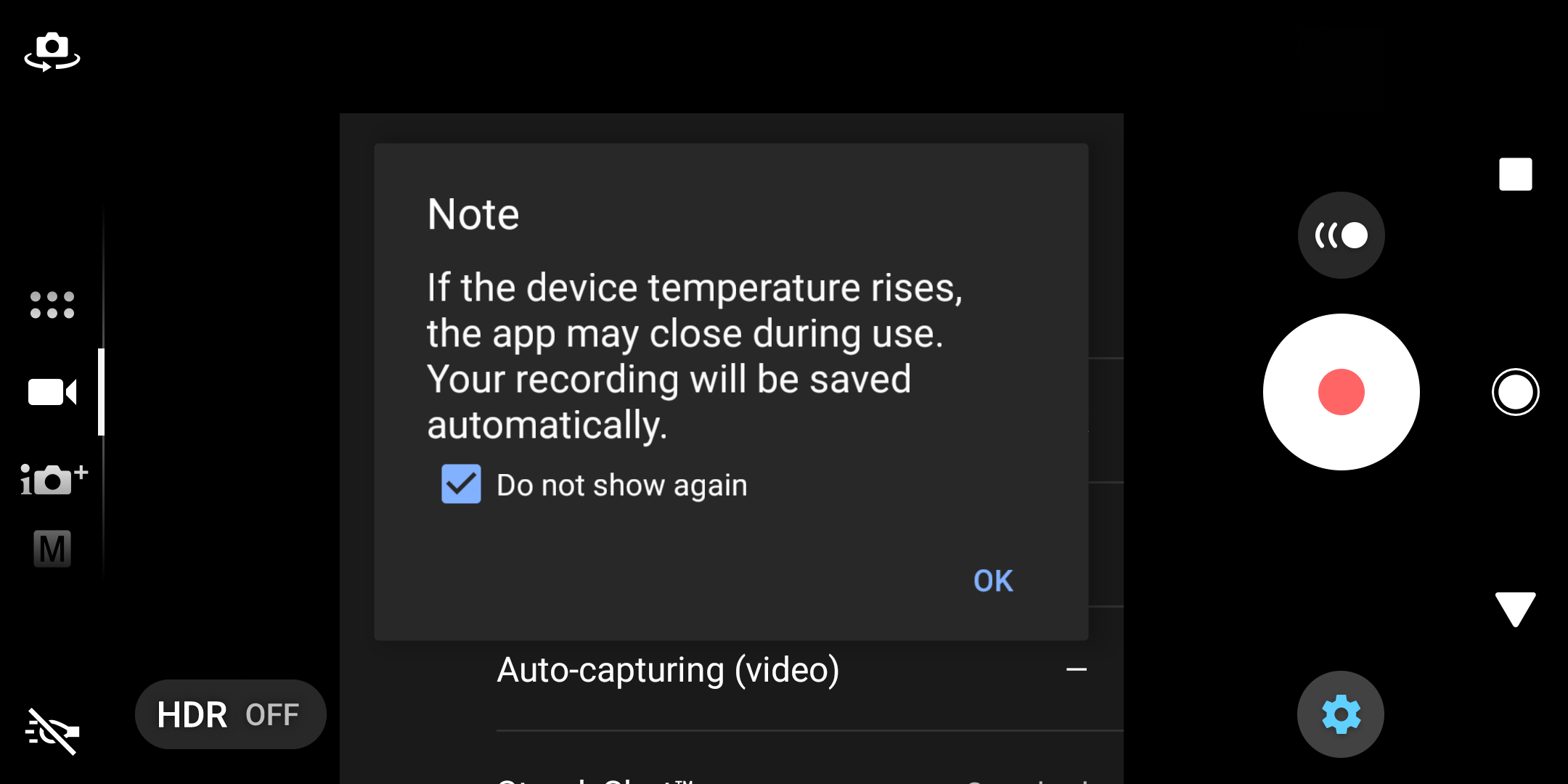
Select 4K video recording, however, and you get a message on screen warning you that the performance of the handset may be affected by shooting at this high resolution, and that the camera app may close if the handset becomes too hot.
This is an issue that has plagued 4K recording on Sony phones for years, and it appears the gremlins aren’t fully worked out. The handset does get rather warm after a couple of minutes of recording in 4K, and the on-screen image doesn’t manage to hit the same framerate, making for a less than smooth experience.
The good news is the final video won’t experience any of this lag, it’s simply the Xperia XZ2 struggling to keep up with the high-quality stream.
To fully appreciate your handiwork you’ll need a 4K HDR screen to watch it on – something the XZ2 doesn’t have. As the screen does support HDR, playback still looks great on the handset – it looks even better on a big screen though.
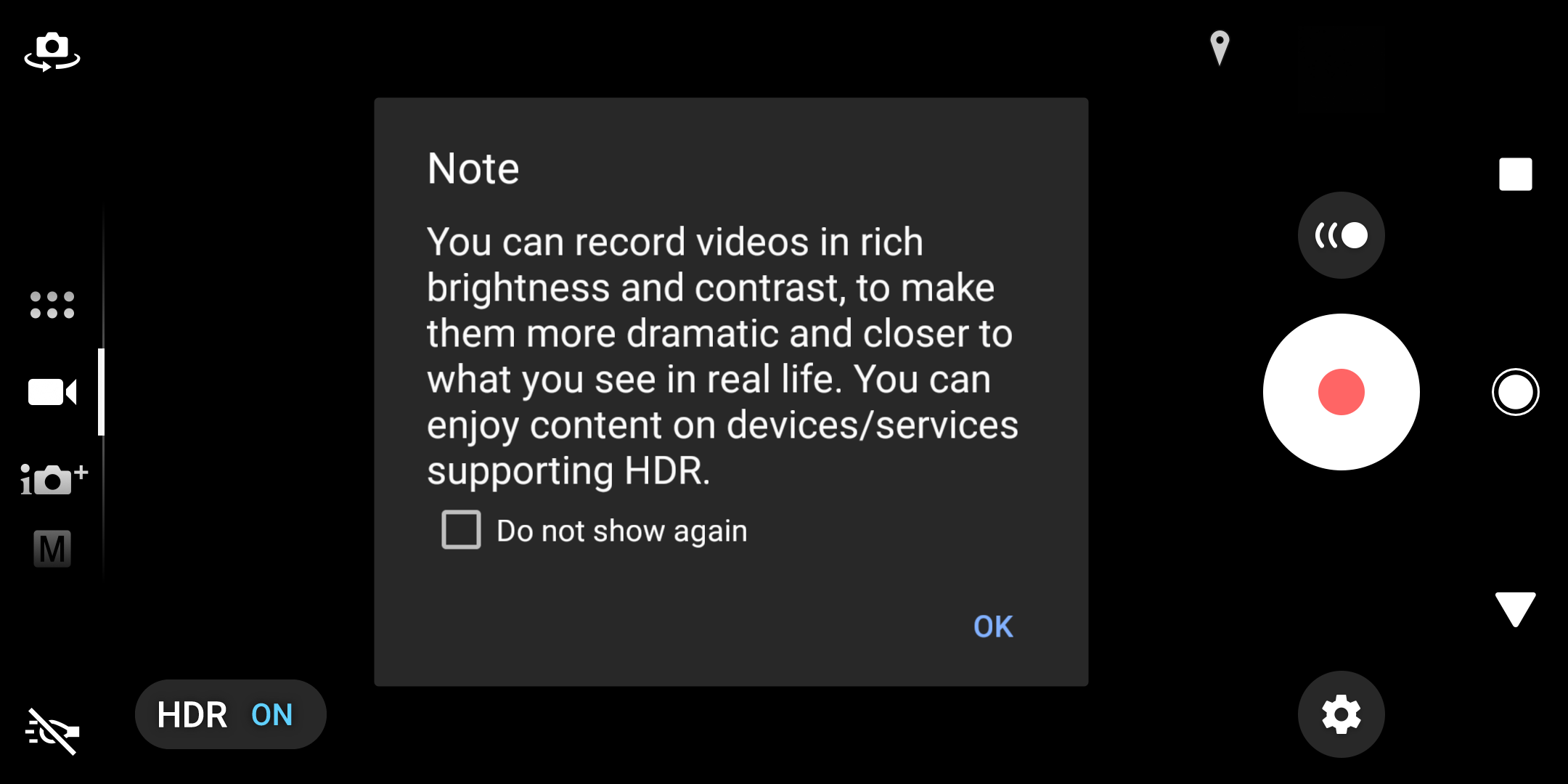
Moving to the stills photography side of things, and the intelligent auto mode on the Xperia XZ2 provides a great camera experience for point-and-shoot enthusiasts who just want to take good pictures at the touch of a button without having to tinker.
The 19MP rear camera is capable of capturing a high level of detail and color in good light, although move indoors or into darker scenes and it can be found wanting, with some images lacking clarity and appearing noisy.
Something else we encountered was a noticeable lag between taking a snap and it being saved to the camera roll – we were left waiting for half a second or so before the thumbnail of our last shot updated in the app.
Considering the power under the hood of the Xperia XZ2 the delay is surprising, especially when compared to its flagship counterparts, which boast more responsive apps.
Like most top-end phones these days, the Sony Xperia XZ2 also offers a Bokeh mode, allowing you to capture images with a pleasantly blurred background. It’s not immediately clear how to enable this mode though.
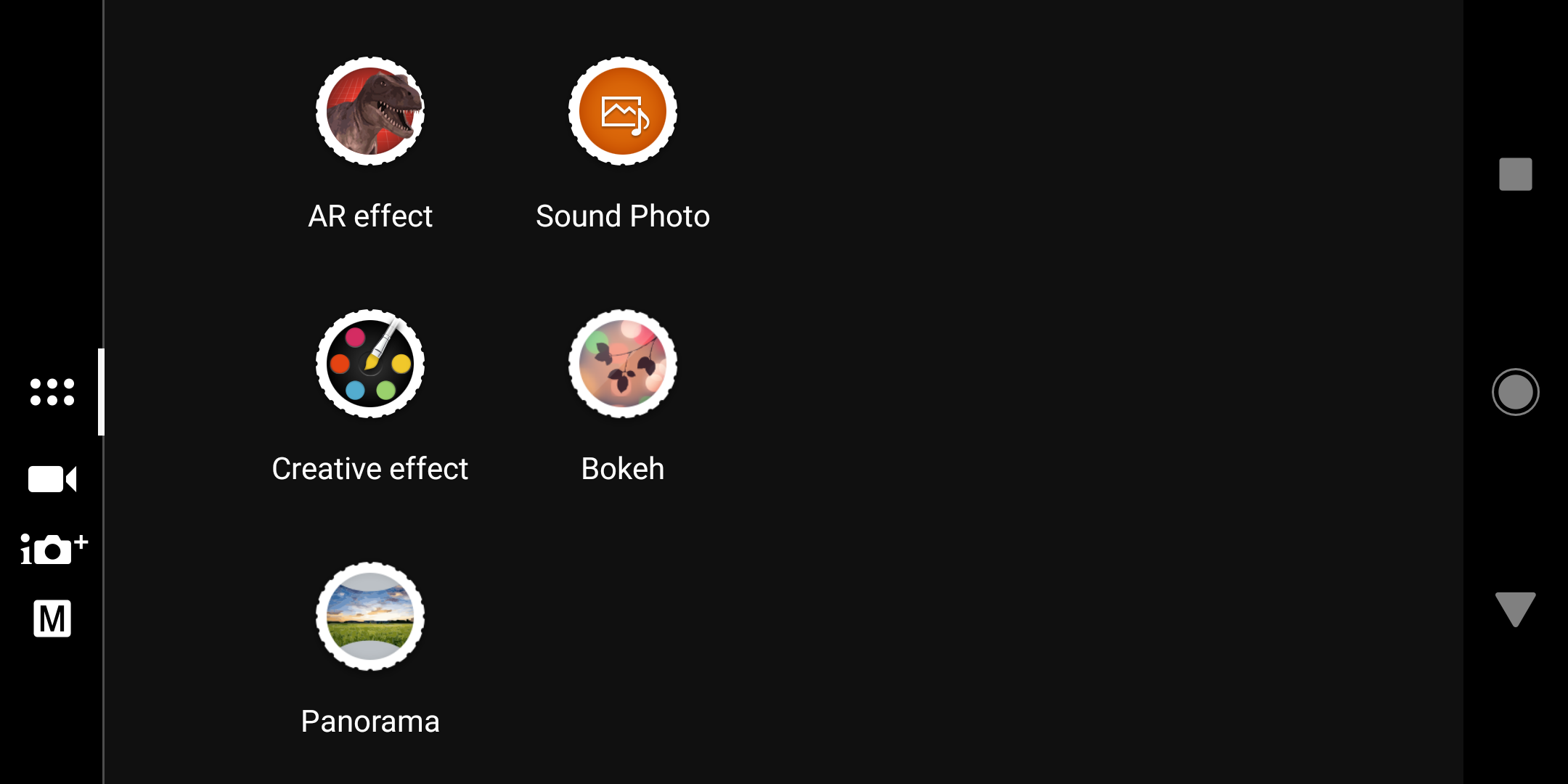
You need to swipe across to the camera apps section and then tap Bokeh. As the XZ2 only has a single camera with a fixed aperture it relies on software to create the blur, and this means that after taking a photo you can adjust the level of blur applied to it.
It’s nice to have this granular control over your image, although we found that the Xperia XZ2 wasn’t always great at distinguishing our foreground subject from the background, which led to some less than perfect blurs at times.
For those wanting more control over the whole photography experience on the Xperia XZ2, the camera app offers a manual mode as well. Here you can adjust ISO, exposure, focus, shutter speed and white balance, while also toggling HDR on and off.
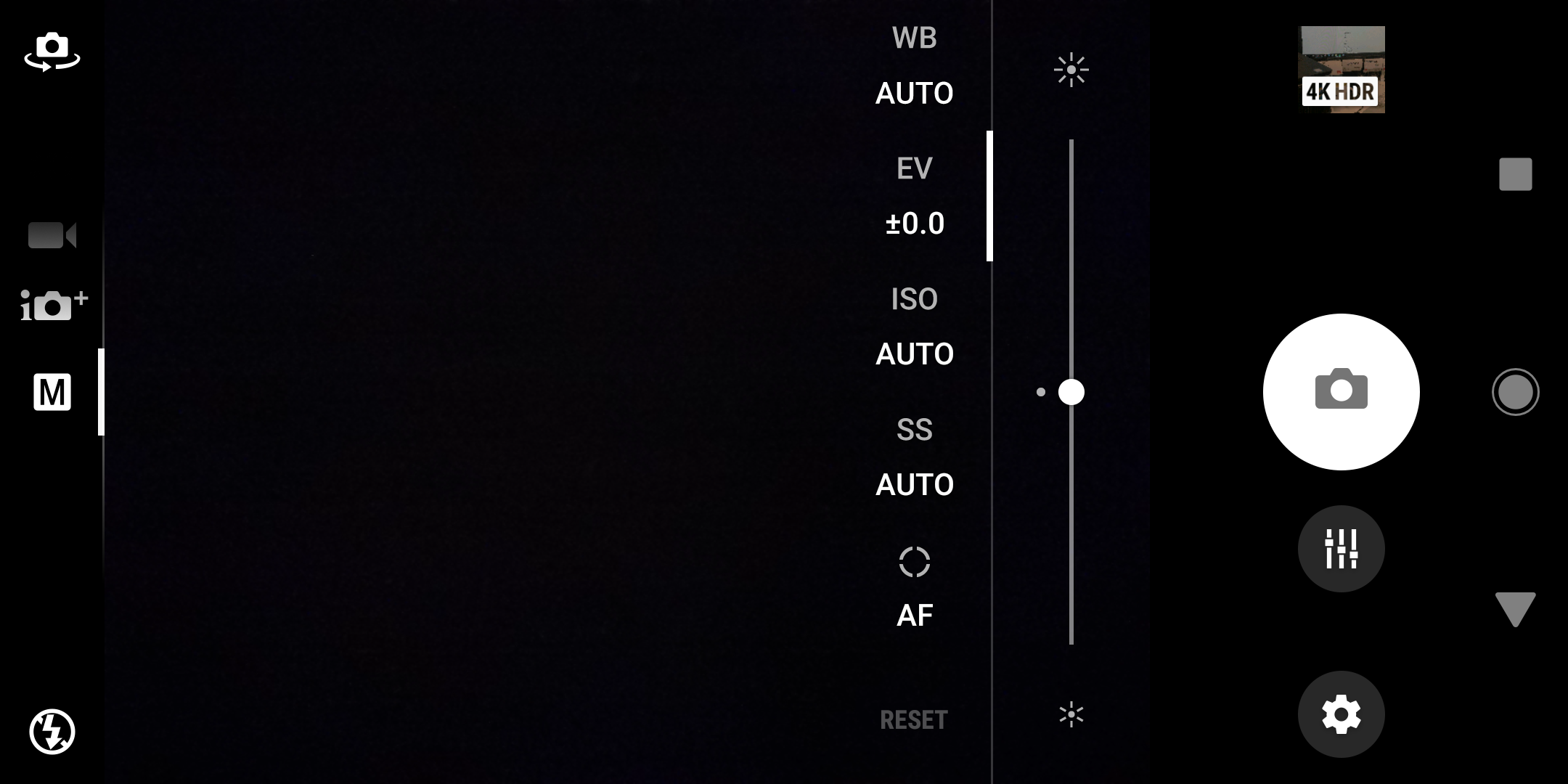
A word of warning: the XZ2 camera app is set to shoot at 16:9 (17MP) as default. If you want to make the most of the 19MP camera you’ll need to adjust the resolution to 4:3 (19MP).
Something the Xperia XZ2 has in its favor is a dedicated physical shutter key, which can make taking photos a lot easier than trying to tap the on-screen button. Selfie-lovers will especially like this option, and Sony is really the only mainstream smartphone manufacturer that continues to offer this level of dedication.
With other manufacturers incorporating triggers to launch the camera app and take photos into the volume and power keys it might seem a little redundant these days, but it’s something we found ourselves using a lot.
Another area where the Sony Xperia XZ2 trumps the competition is super-slow-motion video. It’s no longer the only phone offering 960fps (frames per second) recording – Samsung introduced it on the Galaxy S9 and S9 Plus – but it is the only one to offer it in Full HD.
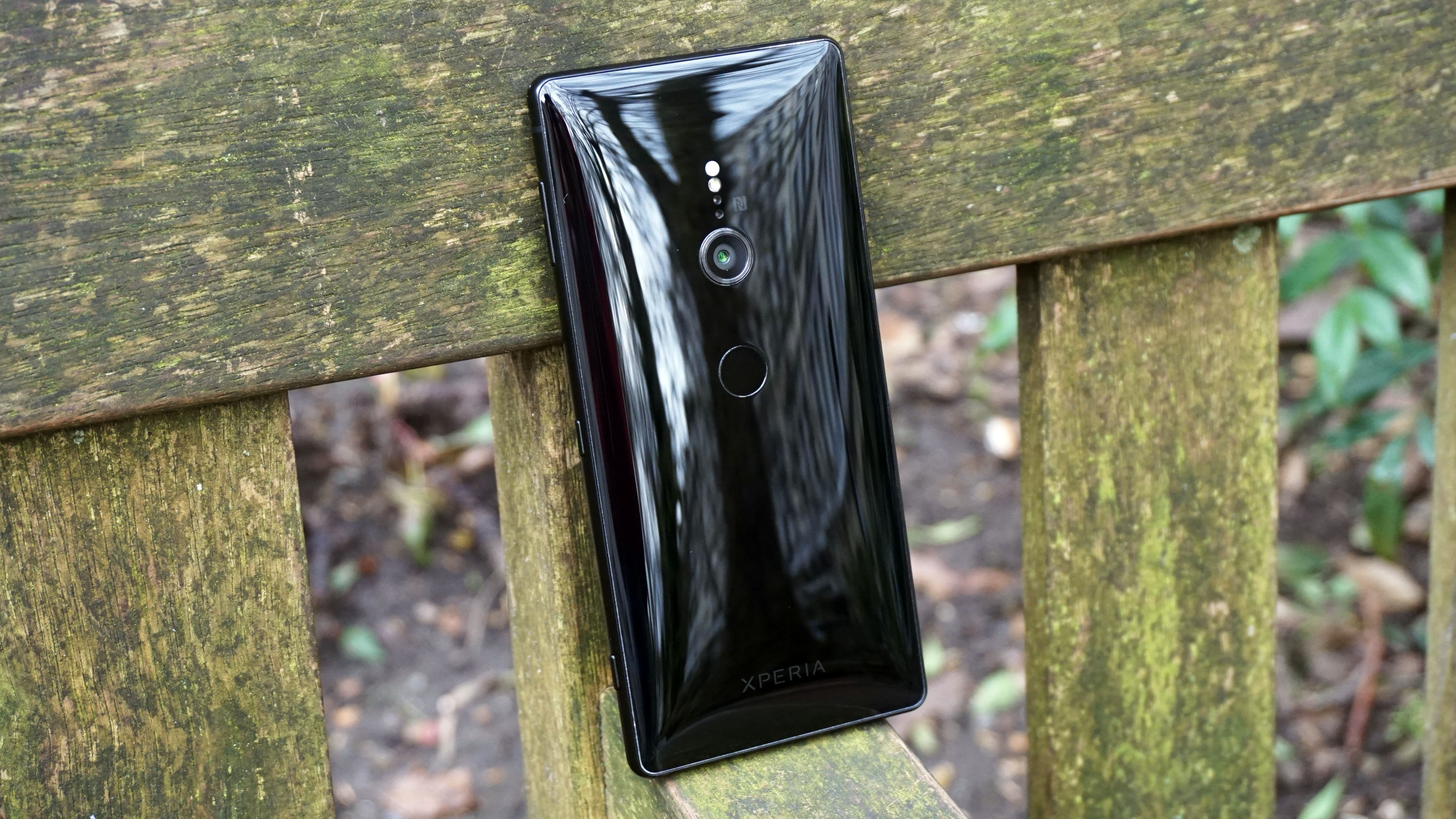
We’ve been impressed with Sony’s slow-mo chops in the past, and while they’re just as impressive here the interface is still a little clunky.
Unlike Samsung’s smart capture, which can detect motion and automatically start recording, it’s a completely manual setup on the Xperia XZ2, and you’ll need to have cat-like reactions to capture the right moment in time to slow down. It only really works well in daylight too, with indoor slow-mo shots struggling for clarity..
Time it right and you can get a super super-slow-mo shot – but it’ll take some practice.
Camera samples
Interface and reliability
The Sony Xperia XZ2 runs Android 8 Oreo, the latest version of Google’s mobile operating system, ensuring the phone is bang up to date out of the box.
Sony applies its own interface to Android, but it’s not as heavy here as previous iterations, giving you a slightly more stock-Android feel. If you’ve used the software before though, you’ll have no trouble getting to grips with the Xperia XZ2.
A few differences you will find include the horizontally scrolling app drawer (Google prefers to vertically scroll these days) and an additional panel to the left (of the app drawer) which offers up recommended apps based on your usage.
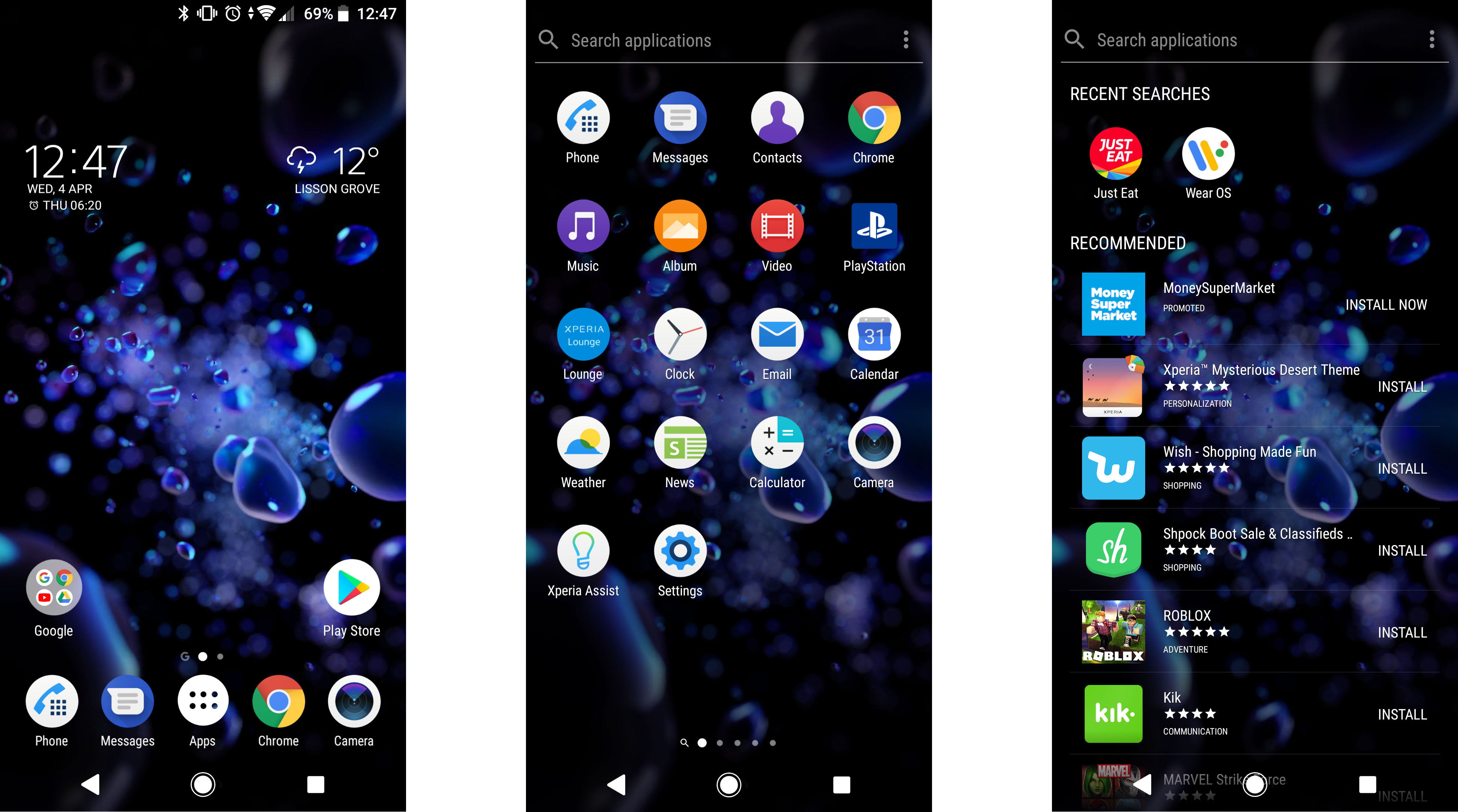
It’s not a feature we ever really felt the need to use, but it’s unobtrusive, so its presence isn’t an issue.
What’s slightly more frustrating are the additional apps Sony has preinstalled on the Xperia XZ2. As well as Google’s accomplished suite of apps, Sony includes its own email, gallery, music and video applications, resulting in unnecessary duplication, plus a number of Amazon apps including Kindle, Prime Video and Prime Shopping.
None of these can be uninstalled, although most can be disabled and so hidden from view. Again it’s not a big issue, but it’s annoying to have so many applications that you haven’t chosen cluttering up the phone when you first switch it on.
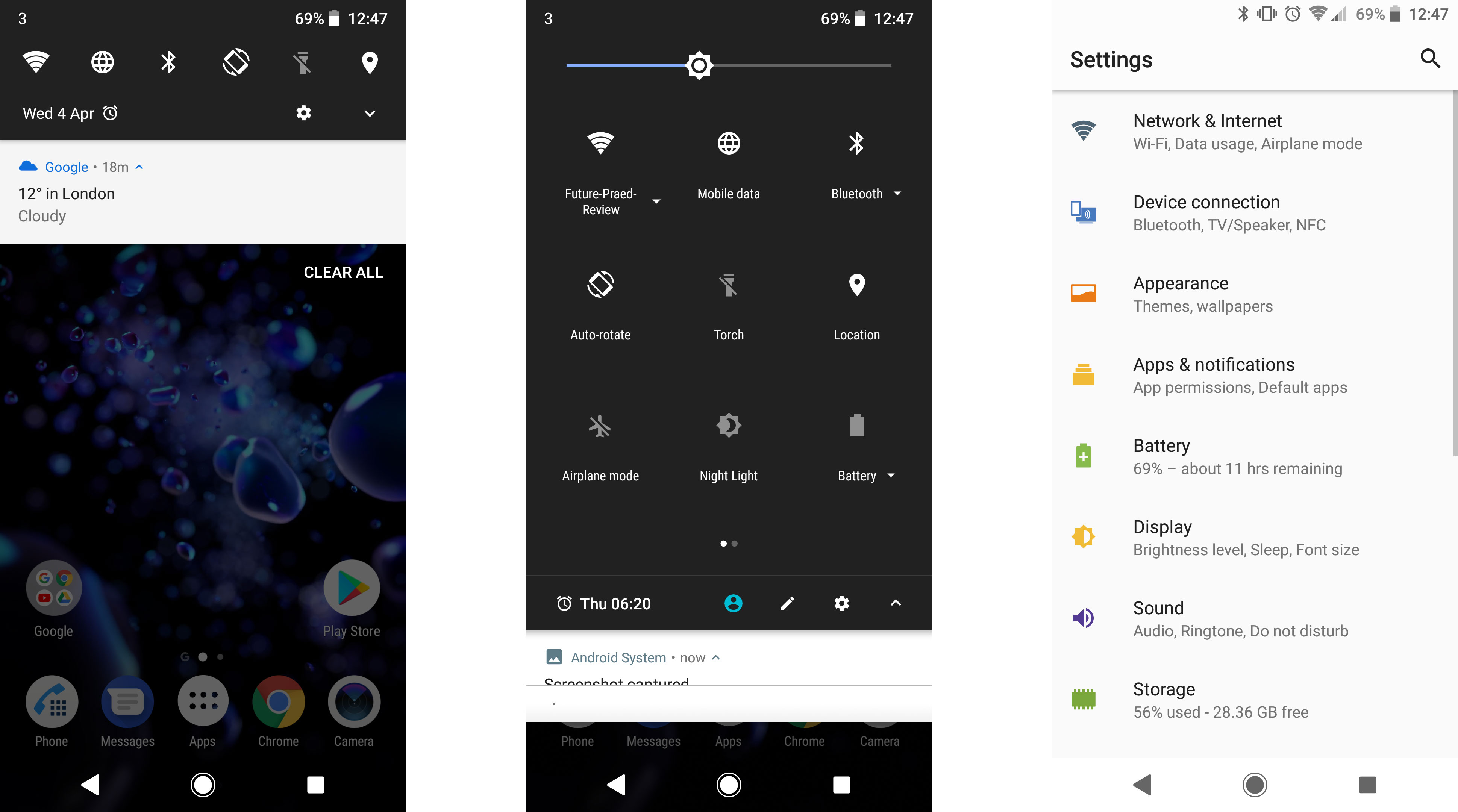
Music, movies and gaming
Sony smartphones are always well equipped when it comes to multimedia, and the Xperia XZ2 is no exception.
The Full HD, HDR-enabled display makes watching TV shows and films a pleasing experience, while the front-facing speakers are excellent when it comes to projecting stereo sound directly into your ears.
If your location is a little too public to utilize the loud built-in speakers, however, then there is a possible slight stumbling block: this is the first flagship Sony smartphone not to boast a headphone jack. It’s a significant step for a brand which always emphasizes the audio quality of its devices, with the Xperia XZ2 boasting Hi-Res Audio, Clear Bass and Clear Audio+ to that end.
All this adds to the audio quality, but you can’t directly plug your 3.5mm headphones into the handset. Instead, you’ll need to remember to keep with you the audio converter that comes in the box and slots into the USB-C port on the phone.
These converters are becoming increasingly common, but the absence of a headphone socket on any phone is a frustration, as the 3.5mm connection is still common in today’s market.
Once you’ve dug the connector out and plugged in your headphones, the sound output on the Xperia XZ2 is very good. From immersive movie soundtracks to party-starting tunes, there’s a lot to like about the audio output here.
Gaming is also a great experience on the Xperia XZ2, with plenty of power under the hood ensuring that the handset is capable of playing the latest and greatest titles from the app store.

Sony’s Dynamic Vibration System is available for gaming, videos and music playback, allowing the Xperia XZ2 to buzz in your hands in time with the music, or in response to what’s happening on screen.
As we mentioned earlier it doesn’t add much to the overall experience, and it can become a little irritating over time, but thankfully there is the option to switch it off if you’re not a fan.
Performance and specs
There’s plenty of power packed into the Sony Xperia XZ2, with Qualcomm’s latest top-of-the-line Snapdragon 845 chipset running the show, assisted by 4GB of RAM.
That’s more than enough to run any app you can throw at the phone, although, as we’ve mentioned, we did encounter some lag in the camera app.
Running Geekbench 4 on the XZ2, the phone achieved an average multi-core score of 8225, which places it right in the middle of the flagship mix.
While the score alone doesn’t give you a definitive answer as to where it stands in the pantheon, what we do know is that the Xperia XZ2 has plenty of grunt under the hood for handling complex tasks such as 4K, HDR and more.
You get a sizable 64GB of storage inside the Xperia XZ2, plus there’s a microSD slot allowing you to build on that by up to 256GB. In short, there’s plenty of space if you need it – and you may well do, as 4K HDR video files take up a lot of room.
Verdict
The Sony Xperia XZ2 is an accomplished flagship smartphone, with a much-needed redesign breathing new life into the firm’s mobile line.
It’s not the major overhaul we were hoping for though, and the new features Sony has added to the Xperia XZ2 aren’t anything we’re inclined to really shout about.
We were hoping for a more radical redesign, even slimmer bezels and some new features that would help to set the phone apart from the competition.
Instead, Sony has given us a well-rounded smartphone that does everything well, but it doesn’t really excite. For the price we’d expect something showstopping – and while it does nothing badly, when you’re paying top dollar you want something you can show off to your friends.
It’s a funk that Sony’s flagship smartphones seem to have been stuck in for a while, and while the Xperia XZ2 makes positive steps it still feels a little behind the times.
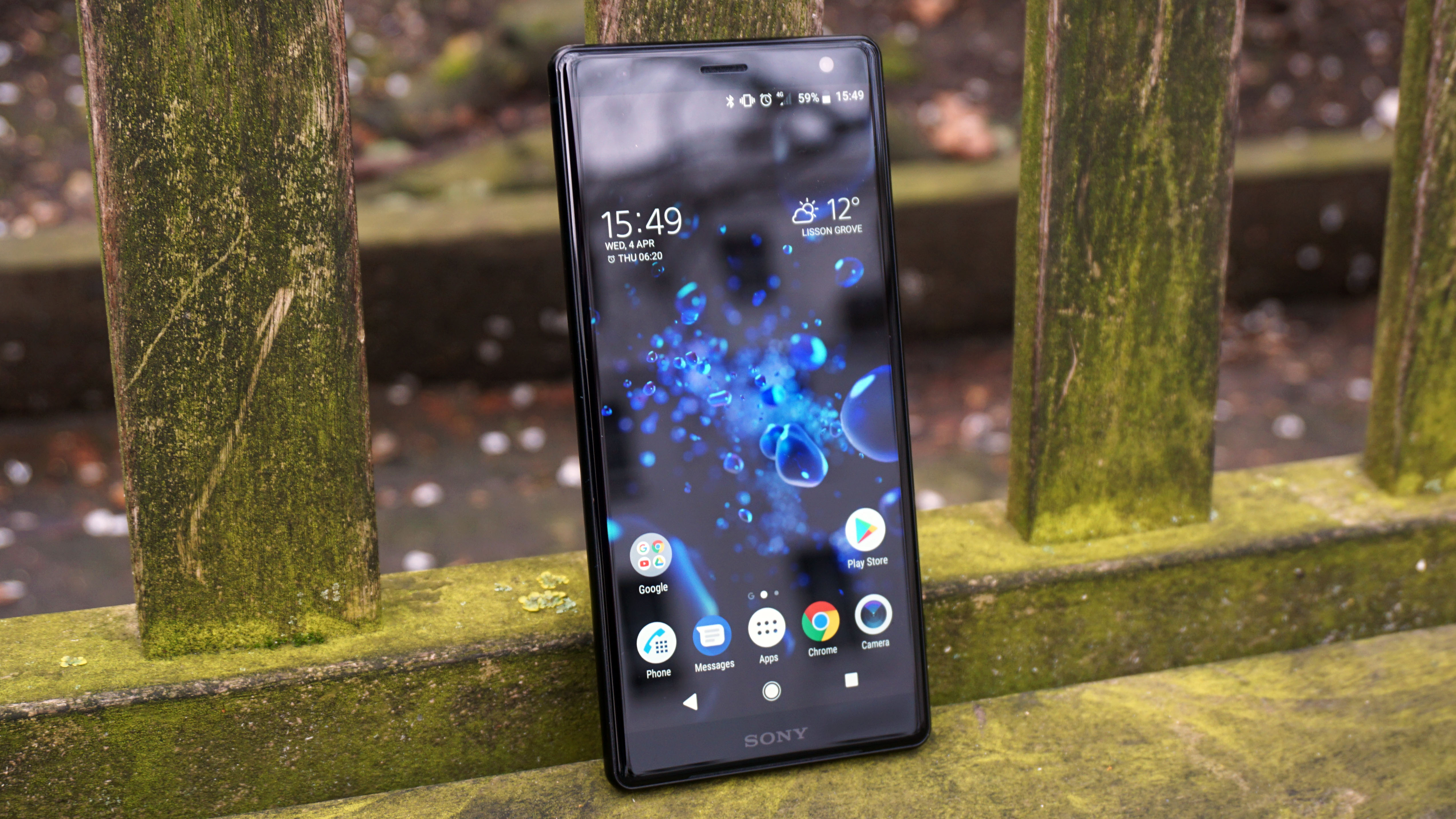
Who’s it for?
Sony fans will no doubt love the new look, the increased screen ratio and the improved camera round the back. If you want the best Sony phone around, look no further.
If, however, you’re in the market for a top-end smartphone and you’re not swayed by a particular brand, then the likes of the Samsung Galaxy S9 and Huawei P20 Pro make for more attractive propositions.
Its price puts the Xperia XZ2 in a slightly uncomfortable position too, as it’s more expensive than the likes of the OnePlus 5T, LG V30 and Google Pixel 2 XL, without offering a huge amount more.
Should I buy it?
You’re unlikely to be disappointed by the Sony Xperia XZ2 (as long as you’re not someone who likes to compare their latest smartphone purchase with competitive friends), as it’s a great all-round smartphone that can tackle any task you throw at it.
It may not be the most eye-catching, but it is functional. If shooting 4K HDR video or Hi-Res audio (albeit via a slightly clunky adapter) is your thing then the XZ2 will be a winner – but if you’re looking for the best bang for your many bucks then it’s worth shopping around.
The Sony Xperia XZ2 has some tough competition, and we’ve pulled together some of its biggest rivals for you to consider before pulling the purchase trigger.
Samsung Galaxy S9
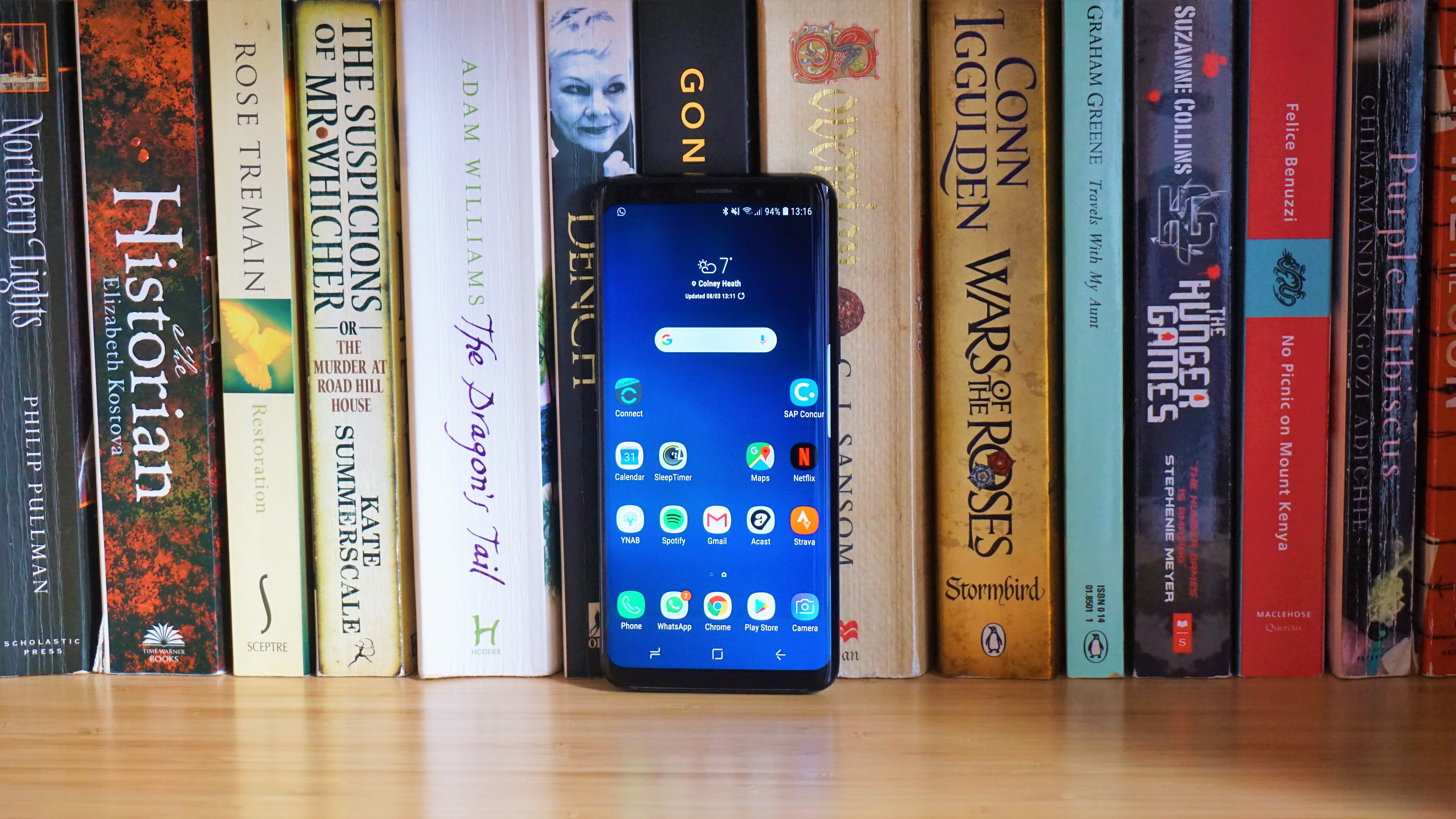
The Samsung Galaxy S9 is the Sony Xperia XZ2’s big rival, with a similar price tag and an equally expansive spec sheet.
The Galaxy S9 offers a bigger screen, higher resolution, a smaller and lighter form factor, and more capable dual cameras on the rear, all of which give it an edge over the Xperia XZ2.
Taking everything into account the Galaxy S9 is the better all-rounder, and the fact that it’s cheaper than the Sony in some markets makes it an even more attractive proposition.
- Read our in-depth Samsung Galaxy S9 review
iPhone X
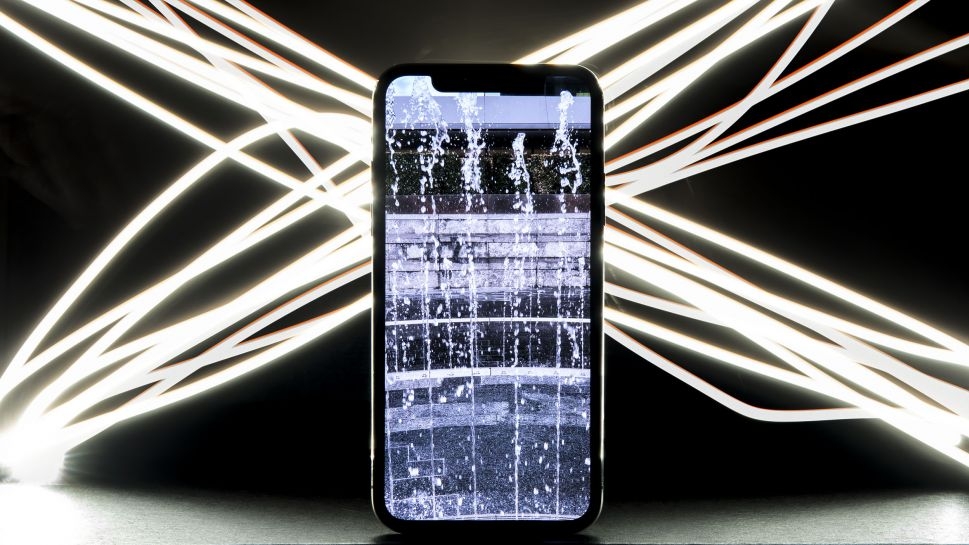
The likelihood is that if you’re thinking about buying the Sony Xperia XZ2 you’re not interested in what Apple has to offer – but the iPhone X is always worth mentioning.
It is more expensive than the XZ2, but it features a striking design with a whole lot of screen upfront, which is only broken up by the now infamous ‘notch’.
You get Apple’s own iOS operating system on screen, a dual-camera setup round the back, and Face ID biometrics rather than a fingerprint scanner.
- Read our in-depth iPhone X review
OnePlus 5T
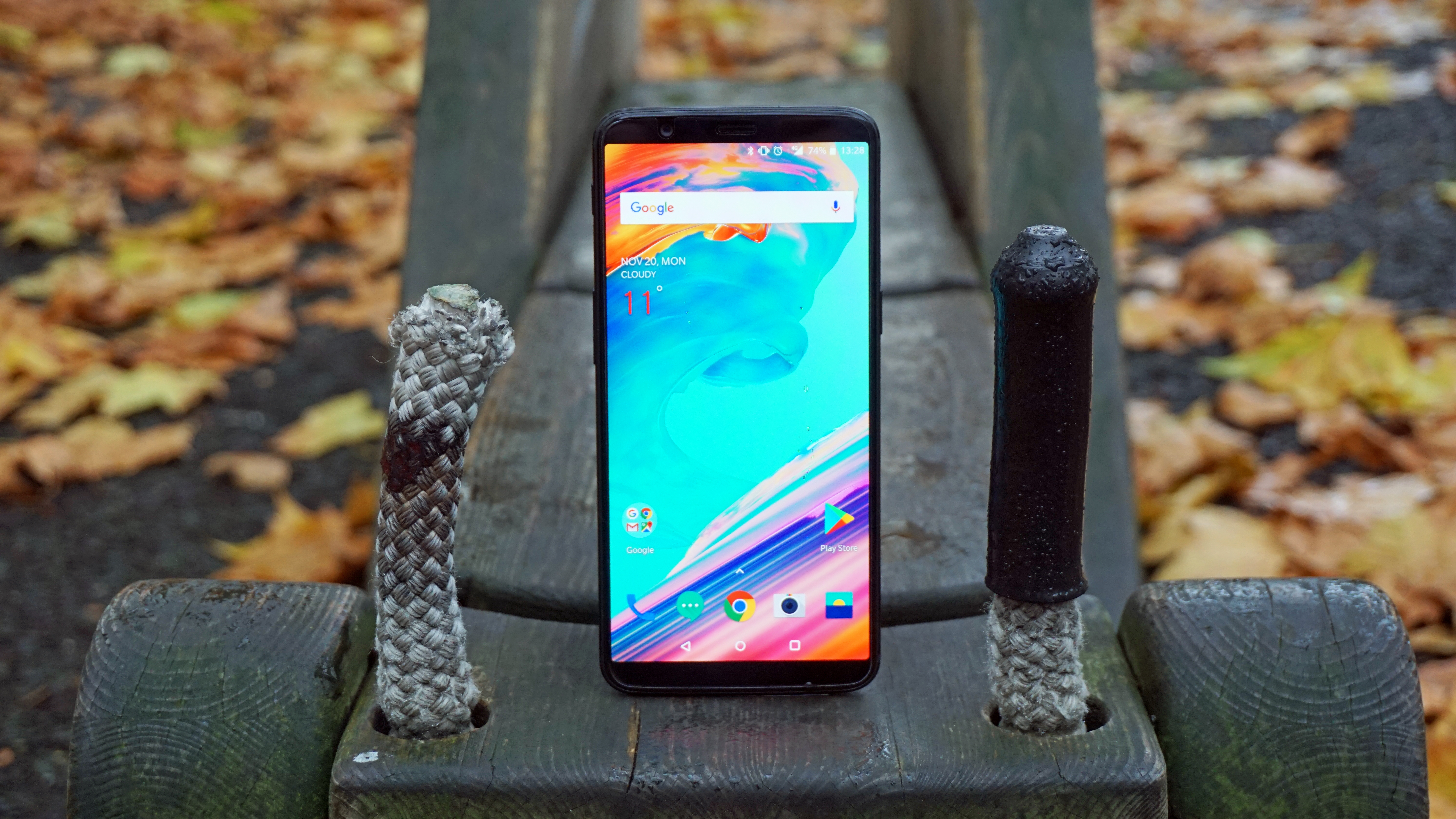
If the Sony, Samsung and iPhone are all a little rich for your blood, you can still pick yourself up a flagship phone for less.
The OnePlus 5T boasts a premium metal body, dual rear cameras and a huge amount of power under the hood to keep Android running smoothly.
A couple of corners have been cut, chiefly in the display department – like the XZ2 it’s ‘only’ Full HD – but it comes in significantly cheaper than the Sony. It is about to be replaced by the OnePlus 6 though, so you might want to keep an eye out for that phone.
- Read our in-depth OnePlus 5T review
Google Pixel 2 XL
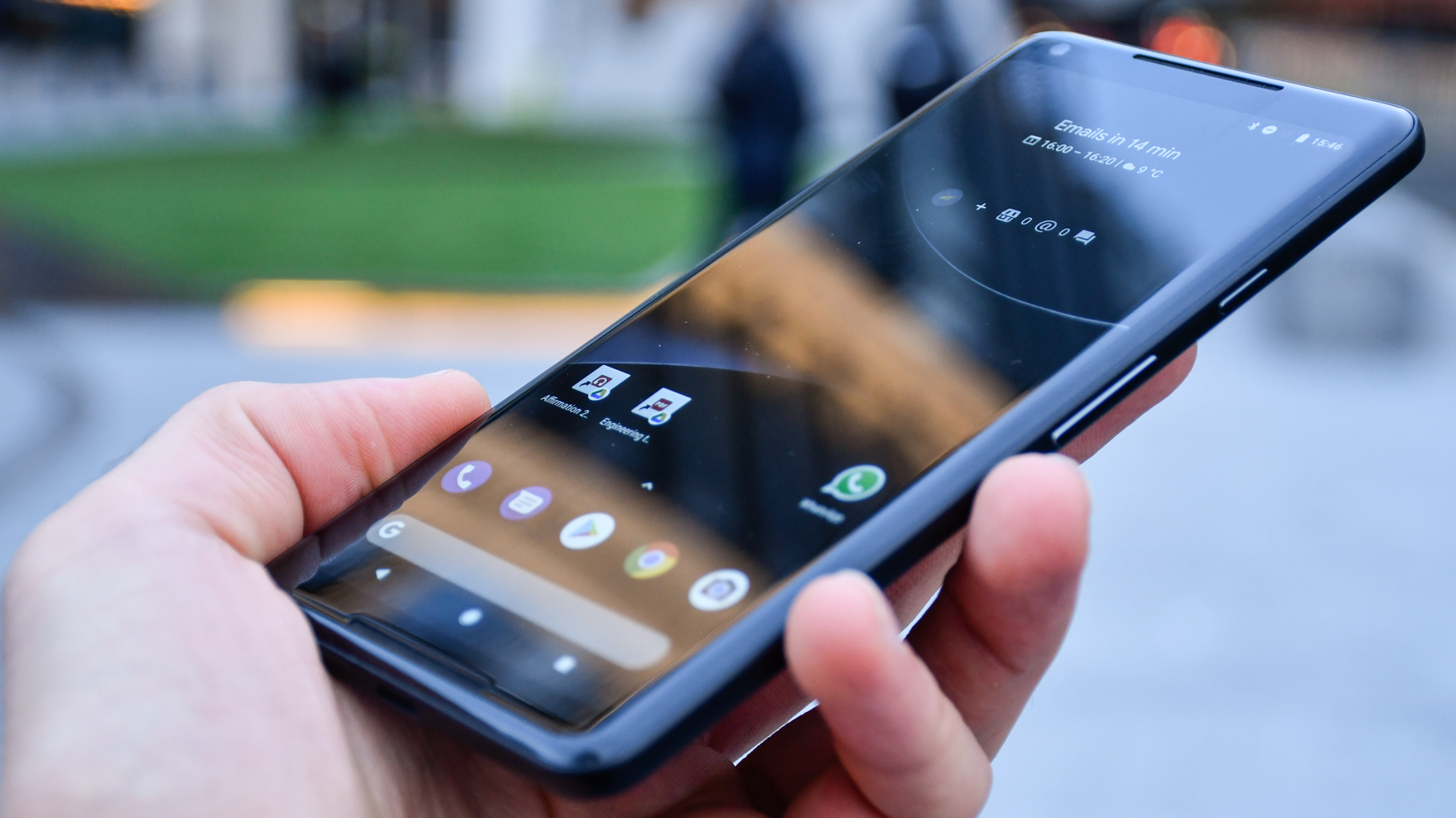
The Google Pixel 2 XL may have launched towards the end of 2017, but it’s still a top buy and its price has since been reduced, making it cheaper than the Xperia XZ2.
It has one of the best smartphone snappers we’ve used, and a large 6-inch display with a QHD resolution.
The Xperia XZ2 does have more up-to-date power under the hood though, giving it a slightly longer lifespan than the Pixel, plus it offers 4K HDR recording and a HDR-enabled display.
- Read our in-depth Google Pixel 2 XL review
First reviewed: April 2018
0 comments:
Post a Comment